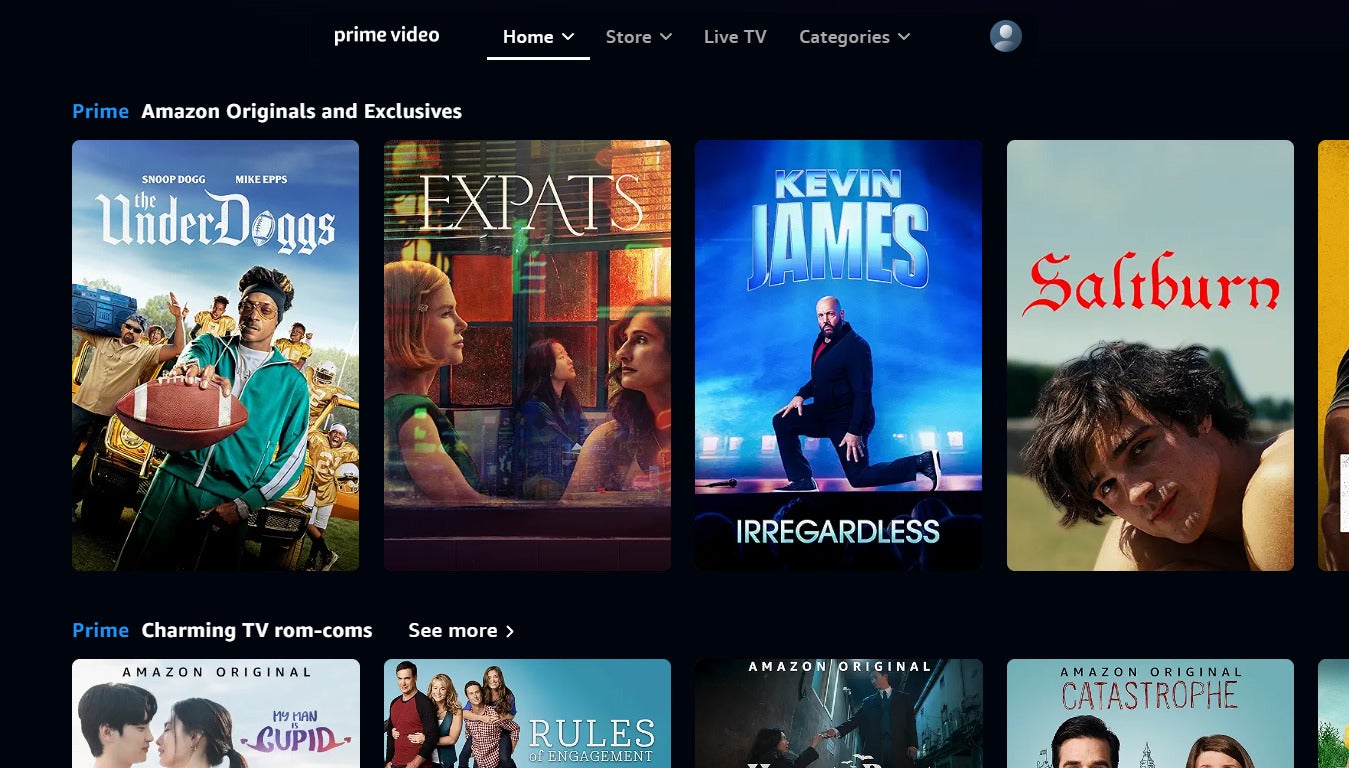How Many Prime Video Subscribers Will Upgrade to Ad-Free Accounts? How Many Will Cancel Because of Ads?
The new ad experience on Prime Video is rolling out on Jan. 29, and a surprisingly small amount of viewers are planning to upgrade.

Prime Video is rolling out the next phase in its evolution. The streamer now offers an ad-supported plan, but its way of introducing that plan differs greatly from other streaming services. Instead of creating a new, cheaper plan with ads, Amazon has simply converted all of its current Prime Video subscribers to ad-supported and is launching a more expensive ad-free plan. To some, that might suggest Prime Video ought to brace for a big wave of customer churn, but new data from Civic Science suggests that wave may be more of a small splash.
- According to Civic Science, only 9% of adults in the United States are planning to upgrade to an ad-free Prime Video account.
- More than one in five (22%) say they’d be likely to cancel their Prime Video subscription once ads were introduced.
- More than half of customers who say ads are at least somewhat important factors in their decision-making say they’ll use Prime Video less.
Will Prime Video See a Big Wave of Cancelations from Introducing Ads?
Civic Science reports that as of September 2023, when Amazon first made the announcement that it was converting all Prime Video subscribers to the ad-supported plan unless they upgraded, 22% of respondents to a poll fielded at the time said they’d cancel their subscription. Only 9% said they’d pay to upgrade to ad-free streaming, which is exactly what Amazon wants to hear, as it makes more from its ad-supported customers than it does from ad-free subscribers, even with the added $2.99 per month a user has to pay to cut out commercials.
Younger subscribers were less averse to ads than older viewers. Civic Science’s data shows that audiences between 18-44 are much more likely to continue using Prime Video at the same rate now that the service is adopting ads. These customers are likely used to watching TV with ads, having grown up in an age where there was no way to escape feeling bombarded with commercials every time the tube was turned on. Older viewers with more disposable income are less disposed to keep using Prime Video for the same amount now that its standard plan comes with ads.
Click images for full-screen version.
The data from Civic Science shows some surprising trends among customers who say they’d be most likely to upgrade versus those who are most likely to cancel. Among audiences with just one streaming service, the odds that subscribers will cancel their Prime Video account rise to 29%; 12% of viewers with two streaming services say they’d cancel their service because of the inclusion of ads, and only 8% of audiences that have 3+ streaming services say the inclusion of ads would make them likely to cut Prime Video out of their streaming rotation altogether.
On its face, this ratio could look a bit backward. It would seemingly make more sense for viewers with more streaming services to be more likely to cancel Prime Video thanks to the inclusion of ads, but this is where Amazon being one of the last streaming providers to launch an ad plan could be working in its favor. Audiences are becoming more accustomed to streaming with ads; in November of 2023, there were more subscriptions for paid, ad-supported streaming plans than there were for ad-free plans for the first time since Antenna started tracking subscriptions. People who subscribe to more streaming services are more likely to be used to streaming with ads already, while those with fewer subscriptions may have been more insulated from the onset of ad-supported streaming until now.
Civic Science’s data also reveals a surprising statistic about the customers who are most likely to cancel their Prime Video account because of the incorporation of ads. Those who say TV advertising affects their purchasing decisions the least were most likely to cancel their Prime Video account; 66% of the segment that says they’ll ditch Prime Video because of the inclusion of ads say advertising has no effect whatsoever on their choices.
This could be because of the methodology Prime Video used to bring ads to its streaming platform. Customers who are most likely to cancel could be standing on the principle that Amazon should have launched a cheaper plan for ad-supported streaming initially, the way Netflix and Disney+ have done. Going this route would certainly have led to price increases for the ad-free Prime Video offering, perhaps immediately, but it could also have avoided creating the feeling among some customers that Amazon was somehow breaking a promise by putting ads on a currently existing plan rather than creating a new ad plan.
Is Upgrading to Ad-Free Prime Video a Good Idea?
The answer to this question really depends on your budget, as well as how you feel about streaming with ads in general. If you simply can’t stand watching a streaming service with ads, you can pay $2.99 per month extra to go ad-free with Prime Video. Step-by-step instructions on how to do so are available here.
The ad experience on Prime Video is unlikely to be remarkably different than that of other streaming services. At $8.99 per month, it’s one of the most expensive ad-supported streaming plans on the market, but at least you’ll get a great deal of content for your trouble on the service. Prime Video has nearly 12,000 movies available to stream, and more than 2,300 TV shows as well.
The bottom line for Amazon is that while more people are likely to cancel than to upgrade to ad-free streaming, 70% of subscribers are most likely to keep their usage of Prime Video right where it is now that the platform has introduced ads. However, viewership and engagement could decline, especially among older users who may not appreciate the methodology Amazon has used to launch an ad-supported streaming plan.
Amazon Prime Video
Amazon Prime Video is a subscription video streaming service that includes on-demand access to 10,000+ movies, TV shows, and Prime Originals like “The Lord of the Rings: The Rings of Power,” “Jack Ryan,” “The Marvelous Mrs. Maisel,” “The Boys,” and more. Subscribers can also add third-party services like Max, Showtime, STARZ, and dozens more with Amazon Prime Video Channels. Prime Video also offers exclusive live access to NFL Thursday Night Football.




